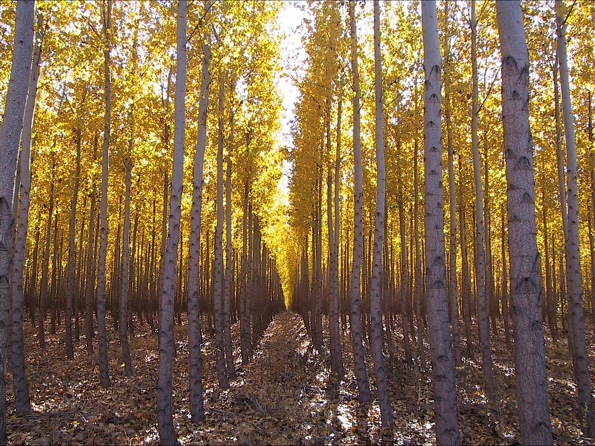Bioenergy resources expanded by the first tree genome
Wood from a common tree may one day factor
prominently in meeting transportation fuel needs, according to scientists whose
research on the fast-growing poplar tree is featured on the cover of [a recent]
edition of the journal Science. The article, highlighting the analysis of the
first complete DNA sequence of a tree, the black cottonwood or Populus
trichocarpa, lays the groundwork that may lead to the development of trees as an
ideal “feedstock” for a new generation of biofuels such as
cellulosic ethanol.

It’s rewarding to see multiple areas of science coming together in a positive direction. We’ve covered this topic earlier here — it’s worth keeping up-to-date with the latest published work.
Wood from a common tree may one day factor prominently in meeting transportation fuel needs, according to scientists whose research on the fast-growing poplar tree is featured on the cover of [a recent] edition of the journal Science. The article, highlighting the analysis of the first complete DNA sequence of a tree, the black cottonwood or Populus trichocarpa, lays the groundwork that may lead to the development of trees as an ideal “feedstock” for a new generation of biofuels such as cellulosic ethanol.
“Biofuels could provide a major answer to our energy needs by giving the United States a homegrown, environmentally friendlier alternative to imported oil,” said DOE’s Under Secretary for Science Dr. Raymond L. Orbach.
“Fine-tuning plants for biofuels production is one of the keys to making biofuels economically viable and cost-effective. This research, employing the latest genomic technologies, is an important step on the road to developing practical, biologically-based substitutes for gasoline and other fossil fuels.”
“Biofuels emit fewer pollutants than fossil fuels such as gasoline. In addition, poplar and related plants are vital managers of atmospheric carbon. Trees store captured carbon dioxide in their leaves, branches, stems, and roots.
This natural process provides opportunities to improve carbon removal from the air by producing trees that effectively shuttle and store more carbon below ground in their roots and the soil. Moreover, bioenergy crops re-absorb carbon dioxide emitted when biofuels are consumed, creating a cycle that is essentially carbon neutral.”
The earlier post referred to up top — from work at Purdue — dealt more with questions about developing poplar plantations.
New directions in hybridizing tree stocks are fascinating. This latest road map will enable many new directions of research — all of it facilitated by advances in modern genetics.
Posted: Wed - September 20, 2006 at 07:40 AM